It’s the time of year when just about every foodie magazine and television show is featuring something made out of pumpkin! So often, though, the recipes call for canned pumpkin puree. It will work, if you don’t have access to the fresh stuff, but making your own is not all that difficult!
Start with a fresh, sweet, pie pumpkin.
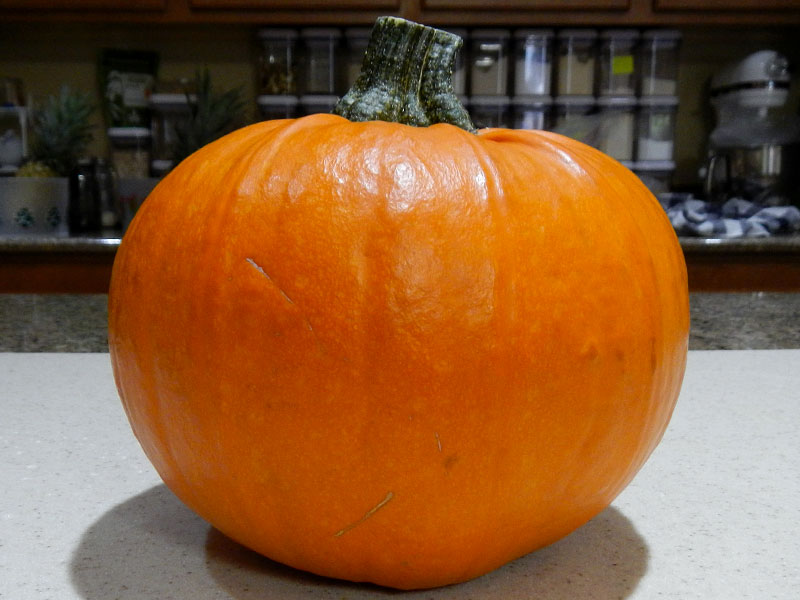
Organic is the best. You don’t want to use a jack-o-lantern pumpkin. Those are specifically bred to last outside with a light in them… not for flavor! In addition, they often have a weird protective coating on the outside. Yuck! Pie pumpkins are smaller, weighing in at 2 to 3 pounds.
Here’s the basics of what you’ll need.
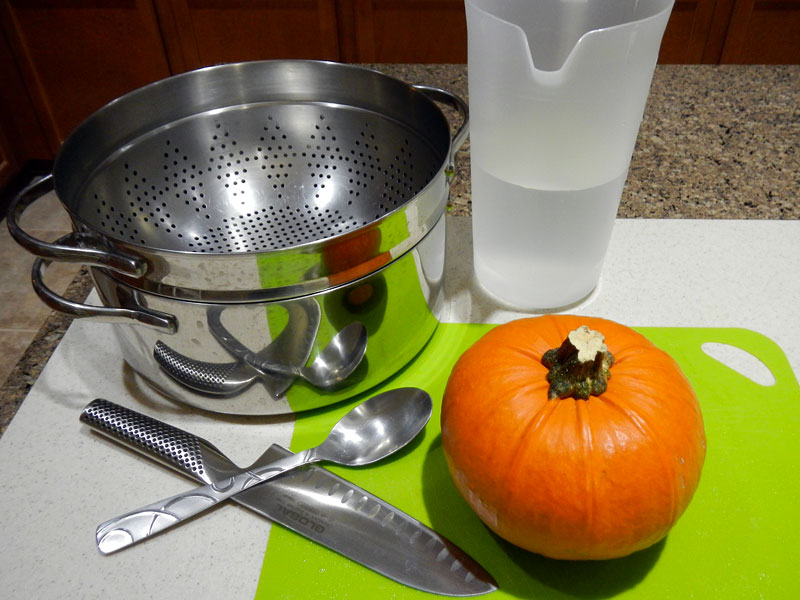
Equipment
For starters, you need a sharp knife. You’ll see, later on, that I changed to my serrated bread knife. It worked much better than the one shown here. You’ll also need a pan with a steamer insert that’s big enough to hold the cut up pumpkin. You’ll need enough water to steam the pumpkin, and a spoon to scrape out the seeds with.
Method
Wash the pumpkin under warm water with a little dish soap and a green scrub sponge. Rinse well. I always scrub the outsides of hard rind squash before cooking. They spend a lot of time on the ground as they mature, and are exposed to the elements. To say nothing of what happens when they are picked, shipped, stacked in the grocery store, and handled by customers! Since the skin is staying on it in the steamer, cleaning is a smart idea.
Begin by cutting the top, stem area off the pumpkin.
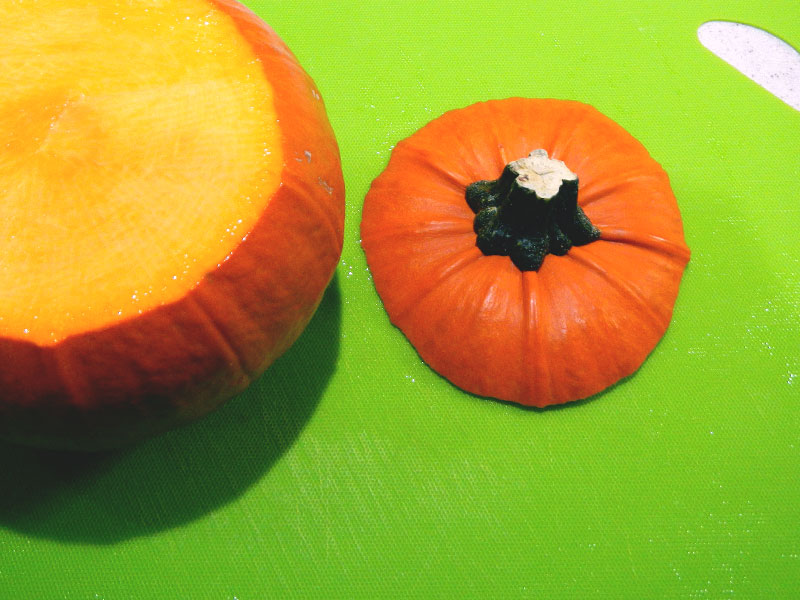
But don’t throw it away! Trim it down, put the pieces in the steamer and throw only the stem away!
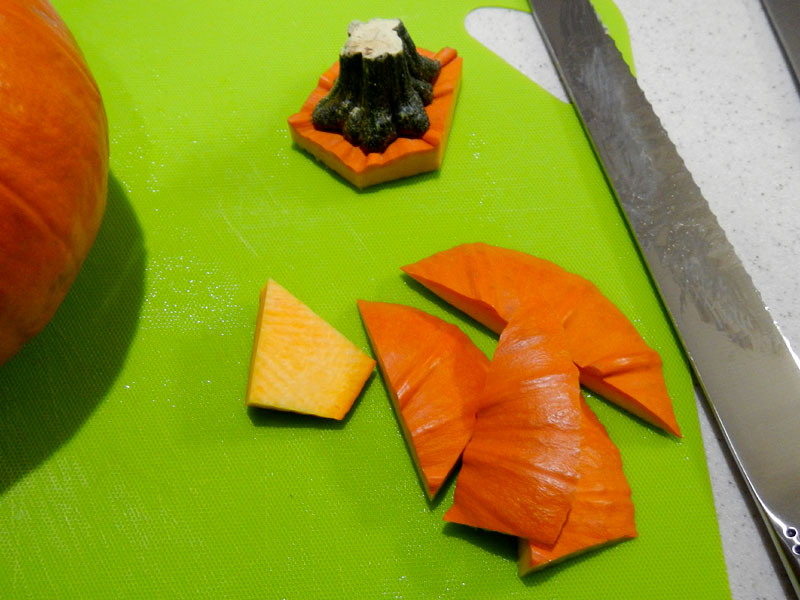
Now you should be able to cut the pumpkin in half, from top to bottom.
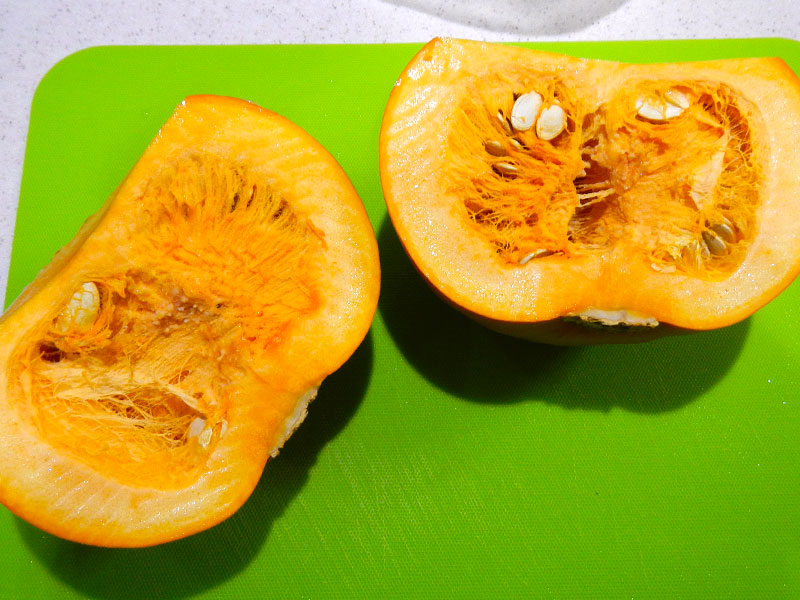
Using the spoon, scrape all the seeds from the sides into the center. Then (sorry, it’s messy) reach in with your hands and remove the seeds and discard them.
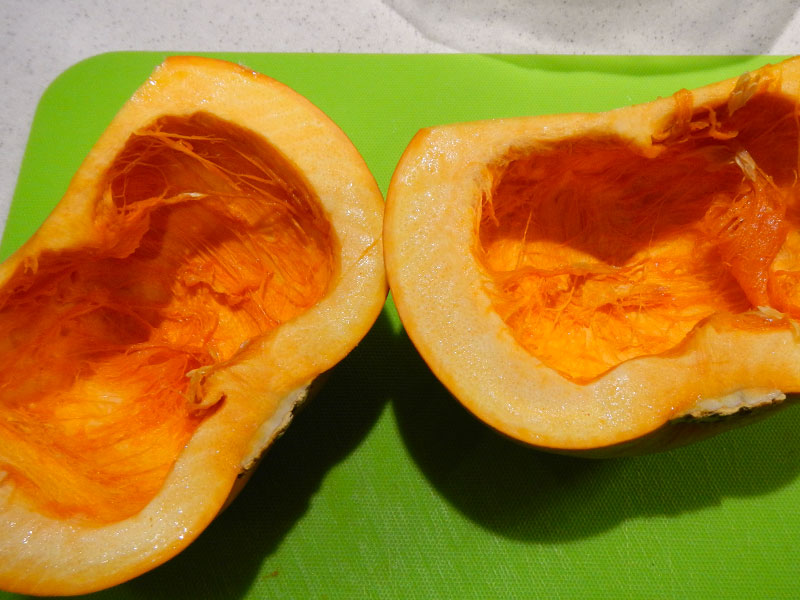
Next, I like to remove the navel (the end where the original blossom was) from the two halves.
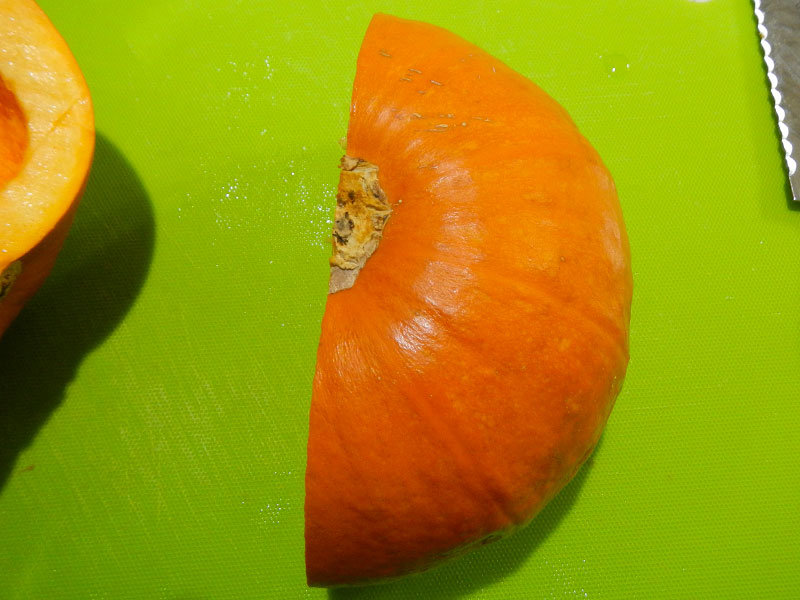
I do this because that spot usually has a lot of tough fibers in it. You don’t have to, but for me, it makes it easier later.
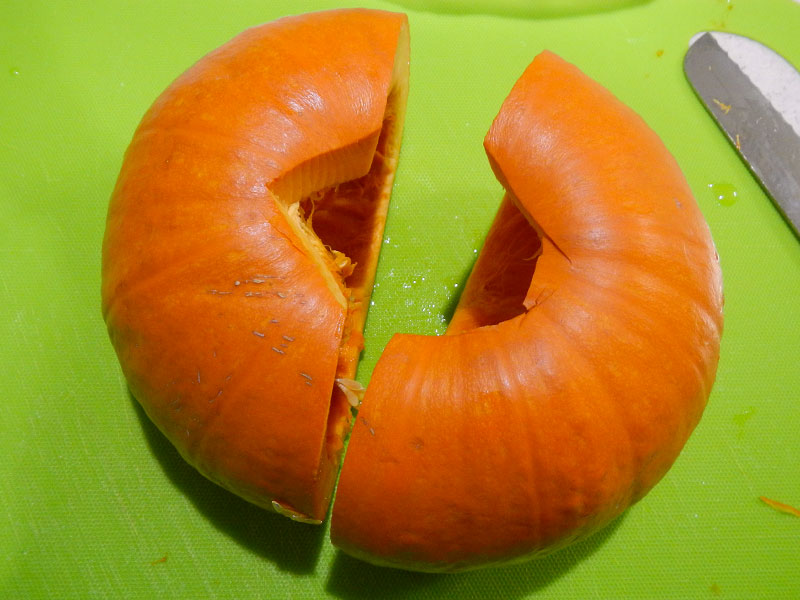
For my steamer, and this size of pumpkin, I cut it into wedges.
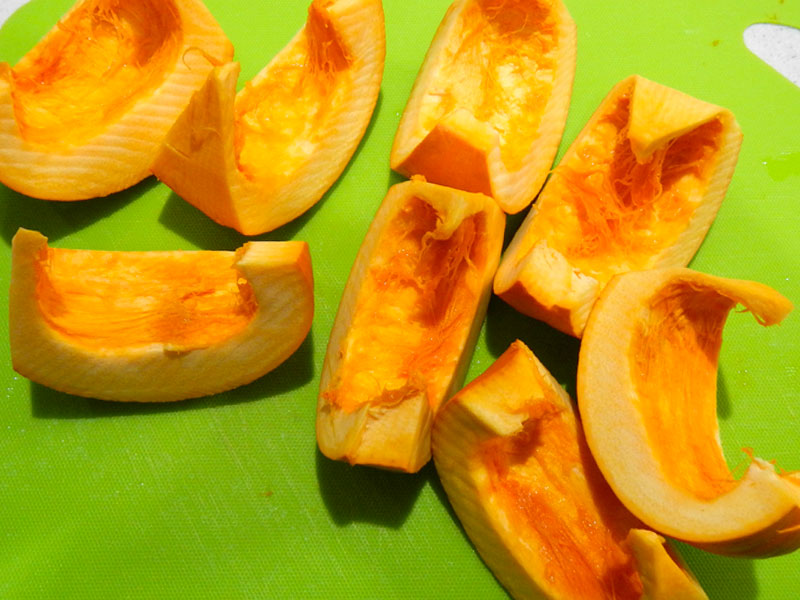
Put them all in the steamer, with at least one inch of water in the bottom, over medium high heat.
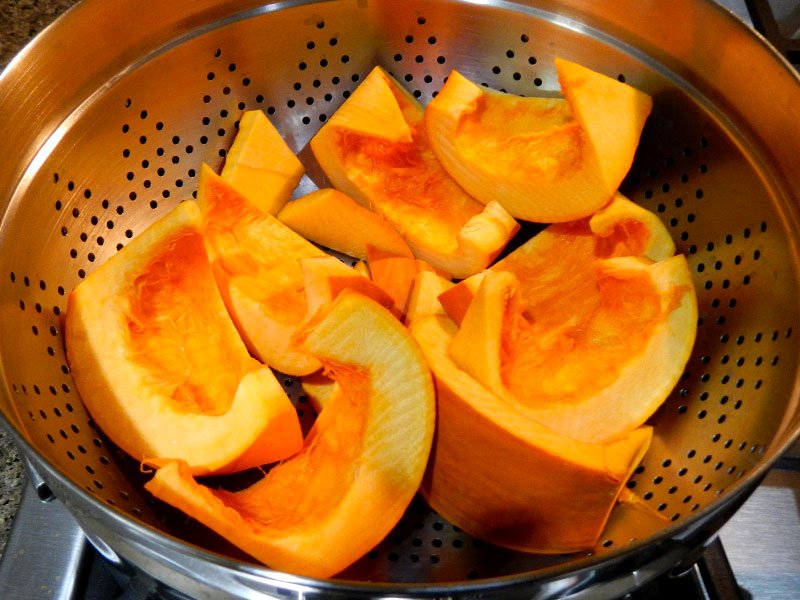
Cover. When the water in the bottom of the steamer starts boiling vigorously, reduce the heat to medium.
You are going to steam the pumpkin until it is so tender you can easily pierce the flesh with a fork. This can take between 30 minutes and an hour. I just set my timer for 30 minutes, and check it when it goes off. If it’s not done, I reset it for 10 minutes at a time until the pumpkin is soft and tender. Make sure you check the water in the bottom occasionally, you don’t want it to run dry!
When it’s cooked, remove the pumpkin to another container to cool.
When the pieces are cool enough to handle, you can use a clean spoon to scrape the flesh off the skin. Discard the skin.
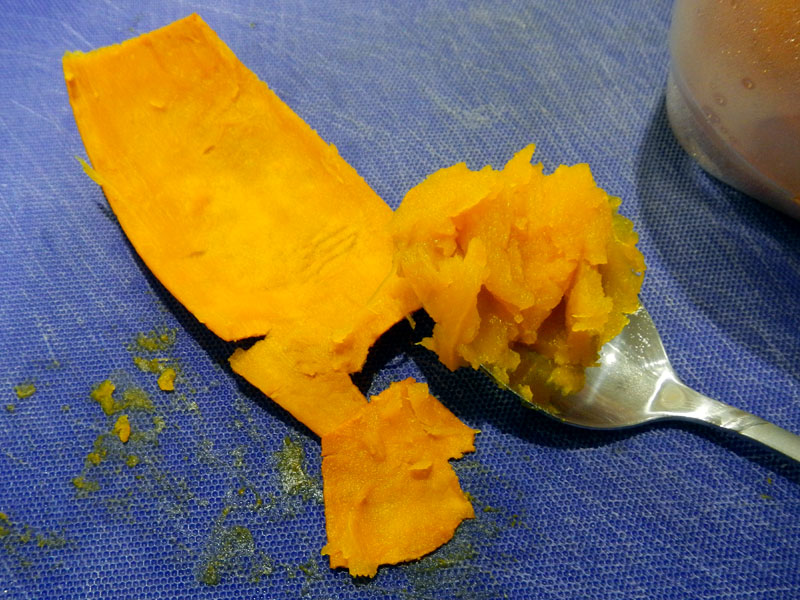
I normally pack the cooked pumpkin into containers, about 2 cups in each. Then I can put it in the refrigerator or freezer to use later.
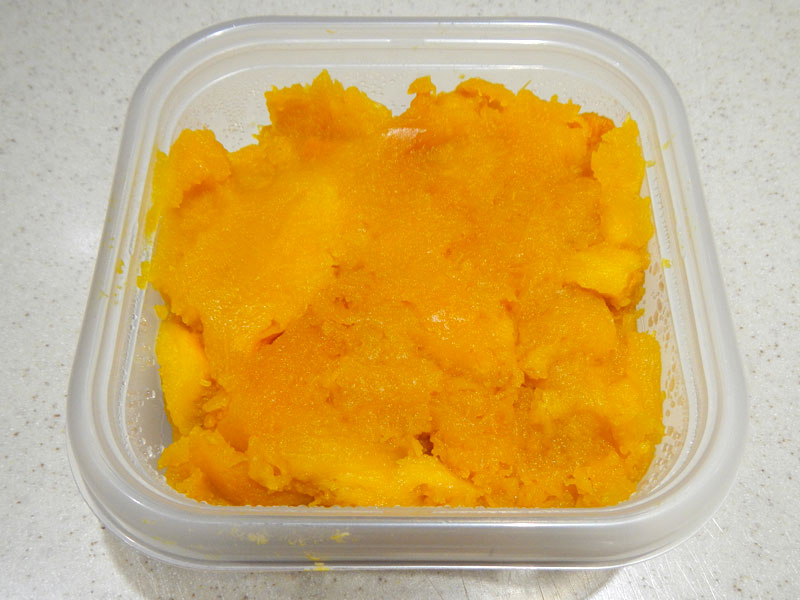
Notes
This technique works for any hard squash, not just pumpkin.
If you are having problems scraping the flesh off the skin, it didn’t steam long enough. If the skin tears up very easily, you probably cooked it too long.
I prefer to steam pumpkins without any seasoning at all. That way, I can use it in either a sweet or a savory recipe without having to compensate for what was in it.
I don’t normally puree this when I put it into the containers for storage. I just pack it down with a spoon. You never know when you might want it a bit chunky!
Conclusion
This is really easy. Why would you want to buy canned pumpkin if you have access to fresh? You steam several, and have pumpkin all year if you stock up!
Enjoy!